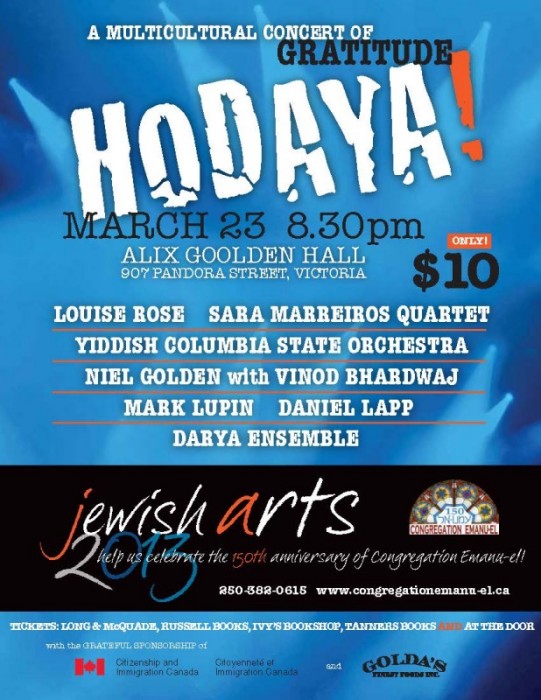Global – Blues
Digging Roots
Farquhar Auditiorium University Centre
Reviewed by Andrea E.
A small but welcoming crowd waited for Digging Roots, self- described “political power of sound,” March 10, 2013, on the University of Victoria campus. The sparse stage was defined by a simple sound-image relationship: Yamaha drums, a few mikes, scattered speakers, and an old, beige mid-size vintage Fender amp plugged into a ukulele. So let’s throw away labels, genre-corrals and attempts to homogenize sound for the ease of the people who were not there. You simply missed a culturally transformative show. (It was unfortunate that Art Napoleon had to cancel due to a family emergency.)
Lead singers ShoShona Kish and Raven Kanatakta, now living in Barrie, Ontario, define themselves as “humans before they were musicians.” Their first song, “All Night,” with smokin’ pedal-effected guitar riffs led immediately into the spiritually aware “Plant the Seeds.” Drummer Paul Ridden took the song three-quarters of the way through with his shift to tribal memory-based drum that moved back and forth with Kanatakta’s sound-shearing, and then percussive, guitar. Third song was the aptly named “Sunshine,” and led to a song the crowd loved Kanatakta’s explanation, “It’s what happens when you are raised in a ‘colonial-country-gospel’ world. Well, you just can’t two-step right with your loved one, hence the name of the song, “Clumsy Lover.” CCR and Hendrix were in the venue at times, and it was impossible not to think of a sunny, windows-open afternoon somewhere on the Rez.
“Lonely” just didn’t sound, well, lonely, and was likely the weakest song in that set–it’s not lonely when four musicians are singing cross-layered harmony and playing back and forth. “Stay” lifted the mood into a bright, light sound. Set by rolling ukulele, and bass player Trevor Miln’s lyrical echo, back and forth–brilliantly written song. Raven unplugged somewhere around here, and moved through the auditorium, circled the crowd, brought everyone into the heart of the night. Kish and Kanatakta then started a call-and-response reverb to everyone, and garnered the crowd’s rising response.
The second set, after sweet “Tall Grass,” delivered the most powerful song of the night: “Going Back,” an ode to Raven’s grandfather Walter who taught him to play guitar influenced by Johnny Cash and Hank Williams, transformed itself into what Raven calls “country-gospel-blues.” Then Janis Joplin’s ghost seemed to take a hold of the mike with ShoShona in “Cut My Hair,” a song inspired by her Great-Auntie Mary’s residential school experience. The song evolved in layers with somber fugue-like drums, eerie pedal effects, and razor-sharp guitar riffs. Totally hair-raising. The crowd loved the Louise Riel inspired “Wake Up and Rise.”
Digging Roots has been booked for the Harrison Festival of the Arts, July 6 to 14. Love Drive, the group’s next self-produced album, will be out this fall.
Andrea E., aka Country Heart, is a fourth-year UVic writing student who lives for any sound with a twang or a slide in it. You can hear Country Heart on CFUV later this spring.

